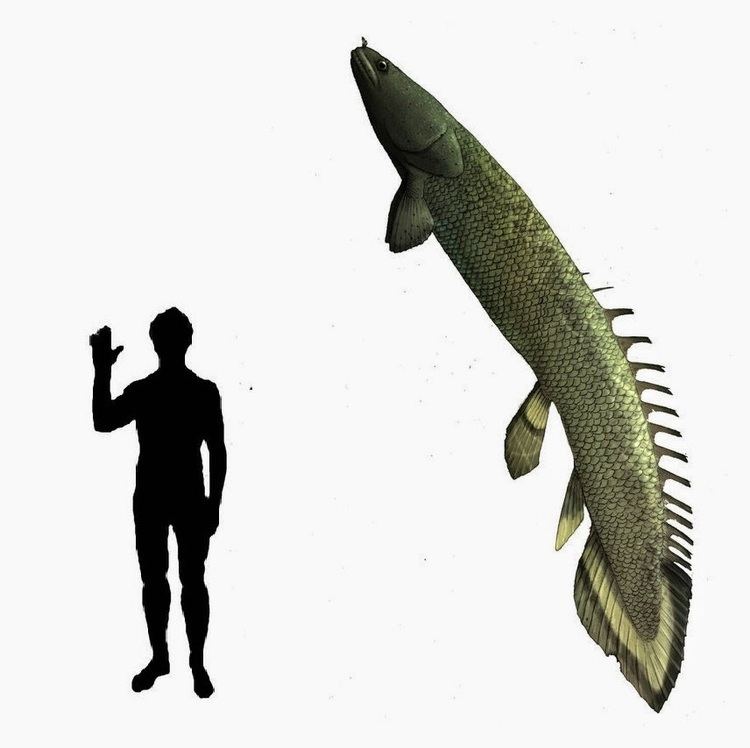Order Polypteriformes Rank Genus | Phylum Chordata Subclass Chondrostei Family Polypteridae | |
 | ||
Similar Mawsonia, Polypterus mokelembembe, Guinean bichir, Polypterus teugelsi, Lepidotes | ||
Bawitius is an extinct genus of giant polypterid from the Upper Cretaceous (lower Cenomanian) Bahariya Formation of Egypt. The genus etymology comes from Bawiti, the principal settlement of the Bahariya Oasis in Egypt. It is known from several ectopterygoid bones and some sparse scales.
Contents
Morphology
Compared to modern polypterids, Bawitius was enormous: the Bawitius holotype ectopterygoid is five times larger than the one of Polypterus and the scales are unusually large, too: these remains suggest the living animal may have been up to 300 centimeters (9.8 feet) in length.
The morphology of Bawitius is different enough to justify its assignment to a new genus. Unique features of the genus are, for example, an anterioposteriorly elongated contact between the lateral process and the maxilla, a high, narrow ectopterygoid and the presence of 14 teeth in the main tooth row.
The scales are different, too, apart from size, from those of modern polypterids: they feature a discontinuous ganoine layer, a rectilinear shape, and small articular processes.
Ecological relevance
The existence of drastically different polypterids such as Bawitius and Serenoichthys corroborates the existence of a variety of polypterid fishes in the ecosystems of Late Cretaceous of North Africa.
